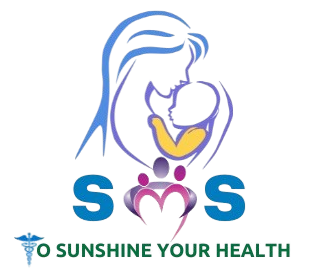Trisemester Care
Trisemester Care
Trisemester care refers to the care provided during the three trimesters of pregnancy: the first, second, and third. Each trimester of pregnancy lasts approximately 12-14 weeks and presents its own set of changes and challenges for the mother and developing baby. Proper prenatal care during each trimester is crucial to ensure the health and well-being of both the mother and the baby.
- First Trimester (Weeks 1–12)
The first trimester is a critical time when the baby’s major organs and structures begin to form. It is often the most physically challenging time for the pregnant person, as they experience a range of symptoms due to hormonal changes.
Key Aspects of First Trimester Care:
- Initial Prenatal Visit: Confirm the pregnancy through blood tests or ultrasound, establish the due date, and begin the prenatal care process.
- Screening for Genetic Conditions: Blood tests and ultrasound screenings may be performed to check for conditions like Down syndrome, trisomy 18, and neural tube defects. Early genetic counseling may also be offered.
- Managing Symptoms: Many people experience nausea, vomiting (morning sickness), fatigue, and heightened sense of smell. Dietary changes and rest are recommended to manage these symptoms.
- Lifestyle Modifications:
- Avoid harmful substances: Avoid alcohol, tobacco, illicit drugs, and limit caffeine.
- Prenatal vitamins: Start taking prenatal vitamins containing folic acid to reduce the risk of neural tube defects.
- Healthy diet: Focus on eating nutrient-dense foods, such as fruits, vegetables, lean proteins, and whole grains.
- Monitoring for Complications:
- Check for signs of miscarriage or ectopic pregnancy, such as heavy bleeding, cramping, or pain.
- Early ultrasounds are used to ensure the pregnancy is progressing normally and to rule out complications like an ectopic pregnancy.
Key Goals of Care:
- Ensure the pregnancy is progressing normally.
- Screen for potential complications like ectopic pregnancy, miscarriage, and genetic abnormalities.
- Promote a healthy lifestyle for the pregnant person and baby.
- Second Trimester (Weeks 13–26)
The second trimester is often called the “honeymoon” phase of pregnancy because many early pregnancy symptoms (like morning sickness) subside, and energy levels may increase. This is also when the baby grows rapidly and begins to develop more recognizable features.
Key Aspects of Second Trimester Care:
- Routine Prenatal Visits: Continue regular check-ups, including monitoring blood pressure, weight, and urine tests to detect issues like gestational diabetes or high blood pressure.
- Ultrasound: An anatomy ultrasound is typically performed between 18-22 weeks to assess the baby’s growth, check for congenital anomalies, and confirm the due date.
- Gestational Diabetes Screening: A glucose challenge test is performed between 24-28 weeks to check for gestational diabetes.
- Fetal Movement: The pregnant person may start feeling the baby move (called “quickening”) around 18-22 weeks.
- Managing Symptoms: Many individuals begin to experience physical discomfort due to the growing baby, such as:
- Back pain and pelvic discomfort.
- Heartburn or indigestion due to pressure on the stomach.
- Leg cramps and varicose veins.
- Swelling in the feet and ankles.
- Skin changes, such as stretch marks or a dark line running down the belly (linea nigra).
- Health and Wellness:
- Nutrition: Focus on getting enough protein, iron, calcium, and fiber.
- Exercise: Continue moderate exercise, such as walking or prenatal yoga, to improve circulation and reduce stress.
- Hydration: Staying hydrated is important to avoid dehydration and manage swelling.
Key Goals of Care:
- Monitor the baby’s growth and development.
- Screen for conditions like gestational diabetes and high blood pressure.
- Provide emotional and physical support as the body adjusts to pregnancy.
- Third Trimester (Weeks 27–40)
The third trimester is the final stage of pregnancy, and it’s when the baby grows the most, putting significant physical strain on the pregnant person’s body. The focus during this time is on preparing for labor and ensuring both the mother and baby are healthy enough for delivery.
Key Aspects of Third Trimester Care:
- Routine Prenatal Visits: Prenatal visits become more frequent, often every 1-2 weeks during the last month of pregnancy. Monitoring includes:
- Checking fetal heart rate and position.
- Measuring the size of the baby (fundal height).
- Testing for group B strep (GBS) around 35-37 weeks, as GBS can be transmitted to the baby during delivery.
- Ultrasound (if needed): To assess the baby’s position (head-down or breech), estimate size, and check amniotic fluid levels.
- Signs of Labor: Learn the signs of preterm labor or early labor, including regular contractions, water breaking, or changes in vaginal discharge.
- Managing Symptoms:
- Increased physical discomfort as the baby grows, including difficulty sleeping, shortness of breath, swelling, and heartburn.
- Braxton Hicks contractions (practice contractions) may occur.
- Preparing for Labor:
- Birth plan: Discuss preferences for labor and delivery, including pain management (epidural, medication-free, etc.), and any special considerations.
- Childbirth classes: Many people attend prenatal classes to prepare for labor, childbirth, and newborn care.
- Packing for the hospital: Start preparing for delivery, including packing a hospital bag with essentials like clothing, toiletries, and baby items.
- Physical Health and Wellness:
- Rest and stress reduction: As the body prepares for labor, it’s important to get enough rest and manage stress.
- Stay hydrated: Hydration helps manage swelling and maintain overall well-being.
Key Goals of Care:
- Monitor for complications such as preeclampsia, gestational diabetes, or preterm labor.
- Ensure the baby is in a healthy position for delivery.
- Prepare for labor and delivery by discussing birth preferences and support.
Conclusion
Trisemester care is essential to ensure the health and well-being of both the pregnant person and the baby. Each trimester has unique needs and challenges, and regular prenatal visits help manage these changes and identify any potential complications. Early and ongoing prenatal care is critical for a healthy pregnancy, safe delivery, and positive postpartum experience.
Need a Solution?
For unplanned pregnancy plans Contact Us

